NYC’s Forgotten ‘War on Christmas Trees’
Discover how an obscure holiday crackdown affects festive street vendors today!


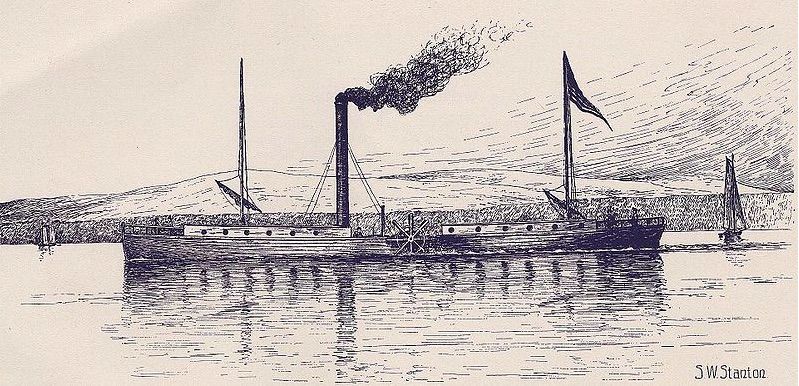
A sketch of the Clermont making its first voyage up the Hudson River. Source: Wikipedia Commons.
On August 17, 1807 Robert Fulton piloted his first steamboat up the Hudson River to Albany.
Fulton’s historic vessel was called the North River Steamboat because the Hudson was still commonly referred to as the North River at the time. It would eventually be known to posterity as the Clermont because the boat stopped at Robert Livington’s Hudson River estate, Clermont Manor, on both legs of its inaugural voyage.
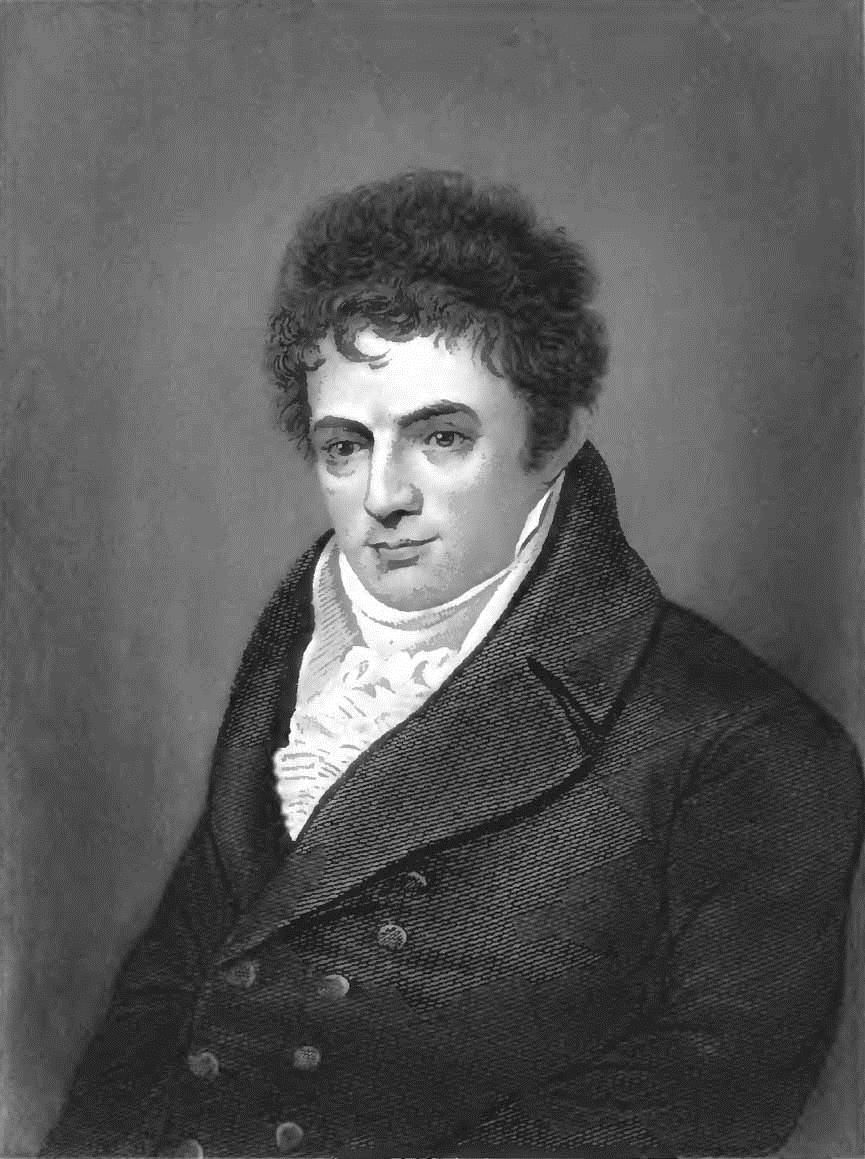
A sketch of Robert Fulton done after the Clermont’s historic run. Image from Wikimedia Commons
Fulton was born in 1765 in Little Britain, Pennsylvania and originally wanted to be a portrait painter. He gained a notoriety in the field by painting Benjamin Franklin’s portrait while both were in London. Through his association with Franklin he gained notoriety in the London scene and began studying ship and canal building because it fascinated him. It was there that he was introduced to the steamboat. While living in France, Fulton was commissioned by Napoleon Bonaparte to develop the first practical submarine called the Nautilus in 1800. The invention would make him a world-wide celebrity even before his steamboat’s first run.
When he returned to the States he settled in New York City where he partnered with affluent diplomat Robert Livingston who brokered the Louisiana Purchase for the Jefferson Administration. Livingston secured an exclusive license for steamboat services on the Hudson. He turned to Fulton to provide the boats to make that license profitable. Thus Livingston became Fulton’s largest investor giving him a majority of the funds to build the Clermont.
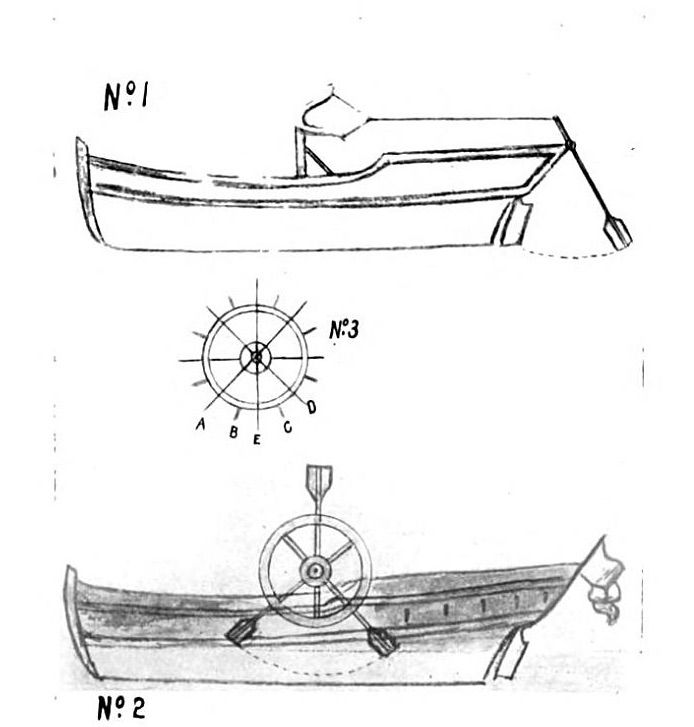
One of Fulton’s first sketches of the his North River Steamboat (Claremont) sketched while he was in France. Source: Robert Fulton and the Clermont.
To build an efficient steamboat Fulton designed his own engine based on an English model he studied in London. The ship’s bottom was flat and its stern was square. This is how Fulton himself described it:
“My first steamboat on the Hudson’s River was 150 feet long, 13 feet wide, drawing 2 ft. of water, bow and stern 60 degrees: she displaced 36.40 [sic] cubic feet, equal 100 tons of water; her bow presented 26 ft. to the water, plus and minus the resistance of 1 ft. running 4 miles an hour.”
According to Alice Crary Sutcliffe’s book Robert Fulton and the “Clermont” the boat was an odd looking craft. “The machinery, placed in the center, was exposed to view and creaked ominously. Only the bow and stern were covered to form cabins.”
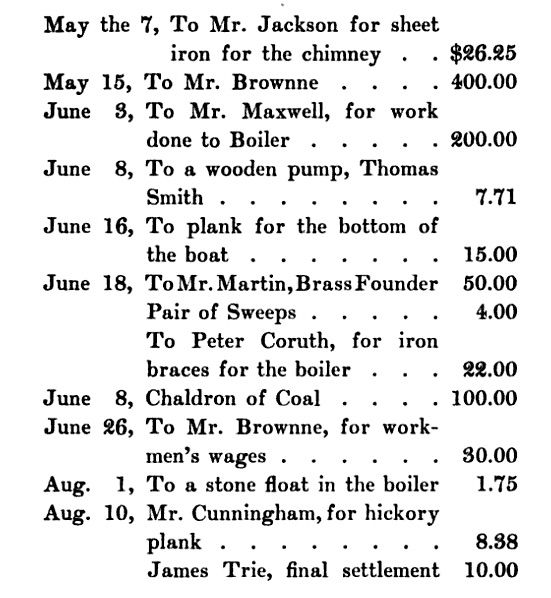
Fulton’s ledger of expenditures before the Clermont’s first run. Source: Robert Fulton and the Clermont
After the boat was completed, it was widely known throughout New York as Fulton’s Folly. No one could imagine a boat running on anything other than wind or manpower. Mass opinion was the experiment would be a spectacular failure. It was reported that some people where so incensed by a machine-run boat that Fulton had to hire men at the cost of $20 to guard the vessel from vandals before its historic voyage.
On August 17, 1807, the Clermont was docked on the Hudson near the old State Prison. At 1 pm Fulton and invited passengers boarded the ship. In a letter written by Fulton to a friend recalling the voyage the passengers were: “silent, sad, and weary. I read in their looks nothing but disaster, and almost repented of my efforts.” The boat pulled away from its mooring and moved a short distance before stalling in the middle of the river. Fulton said immediately that he could hear the passengers saying, “‘I told you it was so; it is a foolish scheme: I wish we were well out of it.’”
Fulton asked the passengers to give him a half hour to figure out what the problem was. He quickly went below and discovered “that the cause was a slight maladjustment of some of the work. In a short time it was obviated. The boat was again put in motion.”
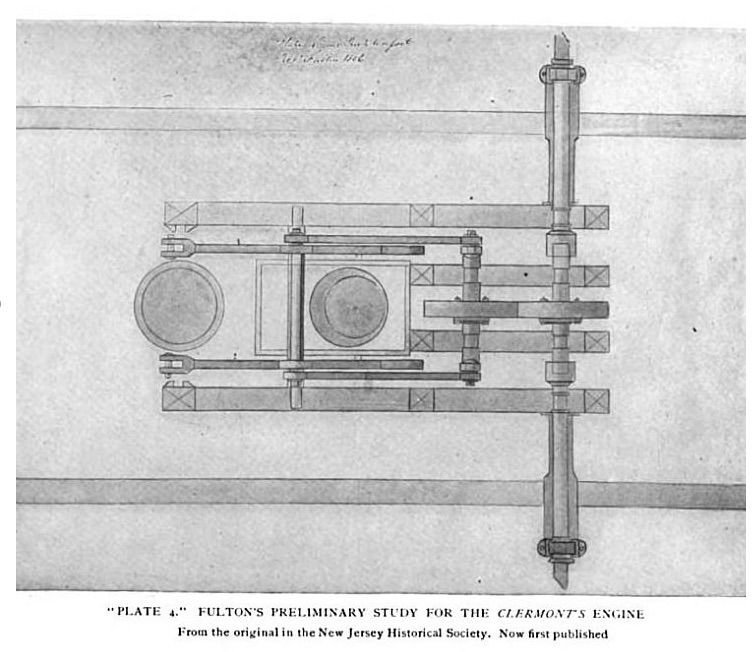
Source: Robert Fulton and the Clermont.
The Clermont steamed upriver from New York to Albany making the round trip in roughly 30 hours without any further incident.
Another letter from Fulton to the editor of “The American Citizen” recounts the stats of his first successful voyage:
“Time 30 hours, space run through 150 miles, equal 5 miles an hour. Throughout the whole way my going and returning the wind was ahead; no advantage could be drawn from my sails—the whole has therefore been performed by the power of my steam engine.”
Thus the era of the steam power boat was born. Within five years, Fulton would be running services on six major rivers plus the Chesapeake Bay, and raking heavy profits.
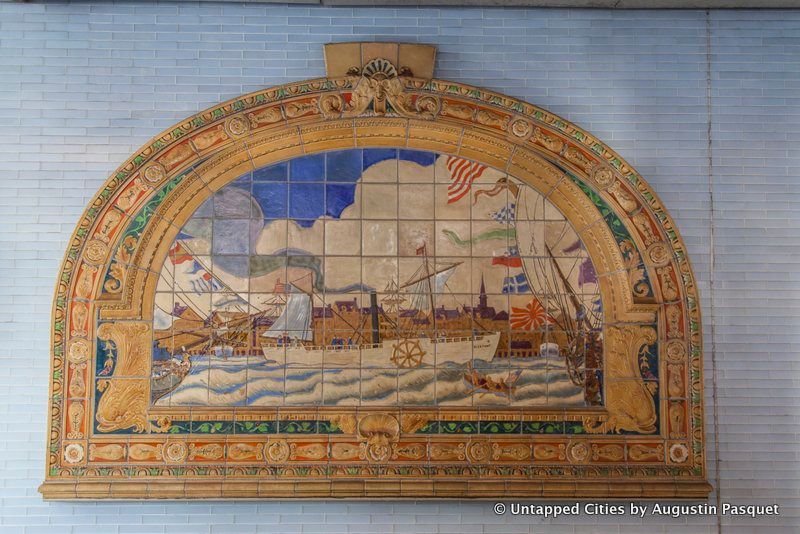 The Clermont mosaic from the old Hotel McApin outside of the A,C subway entrance to the Fulton Street station. Taken during our Past, Present and Future of the Subway Tour.
The Clermont mosaic from the old Hotel McApin outside of the A,C subway entrance to the Fulton Street station. Taken during our Past, Present and Future of the Subway Tour.
Ironic that the river that made him rich and famous would also contribute to his end. Fulton would die in 1815 from tuberculosis which was thought to have been related to pneumonia he contracted when saving a friend who fell through the frozen Hudson on an evening walk home. He is buried in Trinity Church Cemetery next to Alexander Hamilton.
You can learn more about Robert Fulton and the Clermont on our Past, Present and Future of the Subway Tour which closely examines the new Fulton Center hub and its namesake’s history:
Underground Tour of the NYC Subway
Next, read about the Top 10 Secrets of the NYC Subway.
Subscribe to our newsletter